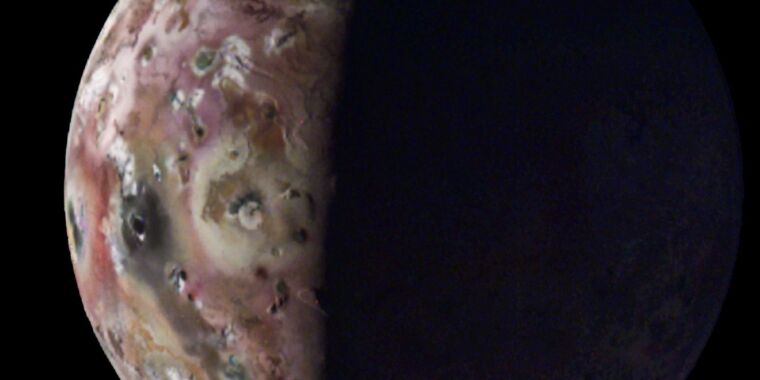Io’s Volcanic Activity: A Closer Look
Exploration of the Solar System has led to fascinating discoveries about the celestial bodies that inhabit it. Since the Voyager mission captured images of Jupiter’s moon Io, scientists have delved deeper into understanding its volcanic activity. Io, slightly smaller than Mercury, stands out as the most volcanically active body in our Solar System. This intense activity is fueled by the gravitational forces exerted by Jupiter and its three other giant moons, leading to a landscape devoid of impact craters due to constant remodelling.
New Insights from Recent Observations
This week, novel findings have emerged regarding Io’s volcanic violence, with the Juno orbiter providing new images of the moon’s distinct features. Notably, Juno captured an image of an island within a lake of lava, showcasing the moon’s fiery and tumultuous nature. Simultaneously, observations made using an Earth-based telescope hint at the ongoing transformation of Io since its formation.
Fiery Landscapes and Unique Features
The Juno orbiter, primarily tasked with investigating Jupiter, has offered glimpses of Io’s intriguing terrain during its orbital passes. Latest images include striking visuals of Loki Patera, a lava lake containing an island, and the sheer slopes of Steeple Mountain on Io. Delving deeper into the lava lake, the Juno team noted remarkably smooth areas, suggesting the presence of obsidian glass formations—a phenomenon indicative of Io’s volcanic fervor.
Insights from ALMA Observations
Researchers in the United States utilized the Atacama Large Millimeter Array (ALMA) to study Io’s sparse atmosphere and analyze emissions from various atoms. By leveraging the imaging capabilities of numerous small telescopes, ALMA pinpointed regional disparities in element presence and identified distinct isotopes in Io’s atmosphere.
By focusing on sulfur and chlorine, the research team aimed to decipher the history of Io’s volcanic emissions. Sulfur, with isotopes 32S and 34S, and chlorine, with 35Cl and 37Cl isotopes, offered valuable insights into the volatile volcanic activity on Io. The presence of sodium and potassium salts in active volcanic regions, as indicated by the ALMA data, underscored the ongoing volcanic processes shaping Io’s atmosphere.
The study of isotopic ratios shed light on Io’s geological history and the long-standing impact of volcanism on its atmospheric composition. These findings deepen our understanding of Io’s dynamic volcanic landscape and the intricate interplay of natural forces at play on this enigmatic moon.
Image/Photo credit: source url





